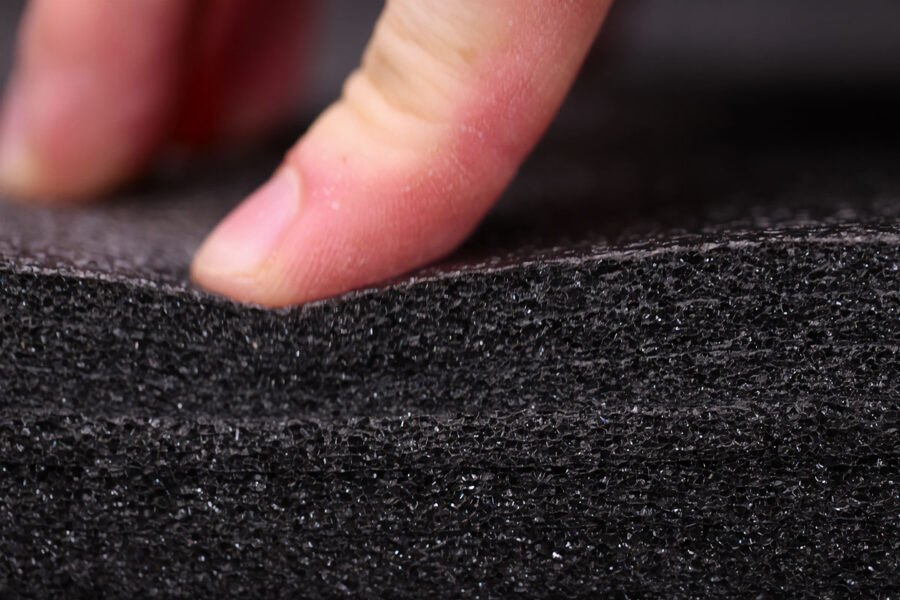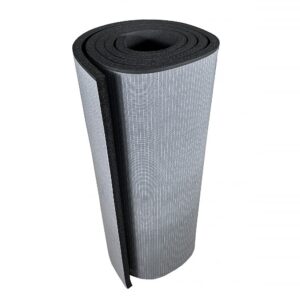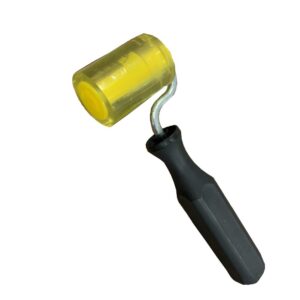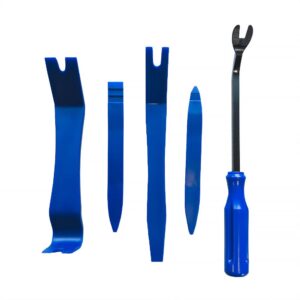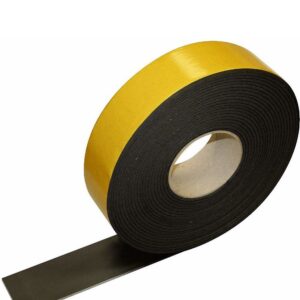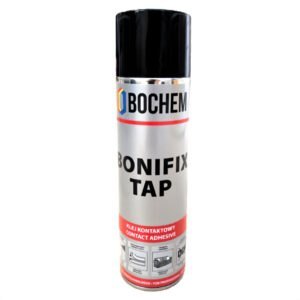Rubber foams are one of the most effective solutions for sound insulation. These materials have gained popularity in both domestic and industrial applications. Their unique cellular structure allows for efficient absorption of sound waves. The closed cell structure ensures that acoustic energy is converted into heat.
The insulating properties of rubber foams are due to their density and elasticity. The material is characterized by high resistance to moisture and chemical agents. In addition, the foams exhibit excellent thermal insulation properties. The rubber structure ensures long-term performance.
The use of foams covers many areas – from soundproofing vehicles to insulating buildings. The material proves itself in reducing noise of various frequencies. It is particularly effective in suppressing mid and treble sounds. Flexibility makes it easy to install on surfaces with complex shapes. Self-adhesive layers further simplify the installation process.
Mechanism of action of rubber foams in noise reduction
Rubber foams work by absorbing sound energy. When acoustic waves encounter the surface of the material, they penetrate its cellular structure. The mechanical energy of the vibrations is converted into thermal energy. This process effectively reduces the intensity of sound.
Cellular structure as key to effectiveness
The closed cell structure is the basis for the performance of rubber foams. Each cell forms a miniature resonance chamber. The air enclosed in the cells absorbs acoustic vibrations. The size of the cells affects the range of frequencies absorbed.
The density of the material determines its damping properties. Higher density means better absorption of low frequencies. Materials with a density of 150-200 kg/m³ show the best acoustic performance. The elastic structure allows deformation under the influence of sound waves.
The thickness of the foam directly affects the effectiveness of the insulation. Thinner layers cope better with high tones. Thicker materials effectively attenuate low frequencies. The optimal thickness depends on the type of noise.
The process of absorbing sound waves
Sound waves penetrate the foam structure through its surface. Vibrations cause air movement in the cells. Friction between the air molecules and the cell walls generates heat. This process is called viscoelastic damping.
The elasticity of the rubber allows it to deform repeatedly without losing its properties. The material returns to its original shape when the load ceases. Cyclic deformation further increases energy absorption. This process occurs without degrading the structure.
Interesting fact: Rubber foams can absorb up to 90% of sound energy in certain frequency ranges, making them among the most effective insulating materials available on the market.
Insulating properties of different types of rubber foams
Different types of rubber foams have different insulating properties. The basic varieties include uncoated, aluminum-lined and self-adhesive foams. Each type has specific applications and properties.
Uncovered standard foams
Basic rubber foams consist only of foamed material. They are characterized by good flexibility and ease of processing. The thermal conductivity coefficient is about 0.035-0.040 W/mK. Sound insulation for a thickness of 25 mm reaches 30-32 dB.
The material shows high resistance to moisture and chemicals. The closed-cell structure prevents water absorption. Foams do not degrade under the influence of oils or solvents. Operating temperature ranges from -40°C to 105°C.
Installation requires the use of additional adhesives or mechanical fasteners. The foam surface can be covered with various finishing materials. Flexibility makes it easy to fit irregular shapes. The material can be cut with ordinary knives.
Foams with an aluminum layer
Aluminum coating significantly improves the thermal insulation properties of foams. The metal layer reflects heat radiation back into the insulated space. Thermal insulation efficiency increases by 15-20% compared to standard foams.
Aluminum also increases the mechanical strength of the material. The covering protects the foam from mechanical damage. The aluminum surface facilitates cleaning and maintenance. The material retains an aesthetic appearance for a long time.
The flammability class improves to B-s2,d0. Aluminum acts as a fire barrier. The material does not spread flames or emit toxic gases. Vapor barrier properties are also improved.
Self-adhesive foams
The adhesive layer significantly facilitates the installation of rubber foams. The adhesive is characterized by high adhesion strength to various surfaces. It does not require additional tools or auxiliary materials. The assembly proceeds quickly and efficiently.
The adhesive retains elasticity in a wide range of temperatures. It does not lose its properties under dynamic loads. The adhesive layer is resistant to moisture and chemicals. The connection remains durable for years of use.
Types of adhesives used in foams:
- Acrylic adhesives – universal application
- Rubber adhesives – increased flexibility
- Silicone adhesives – resistance to high temperatures
- Butyl adhesives – excellent adhesion
The aluminum layer in rubber foams can reflect up to 97% of thermal radiation, making the material act as a thermal mirror, significantly improving the energy efficiency of buildings.
Insulating rubber foams in the store Insulation ABM
ABM Insulation specializes in supplying high-quality insulation materials. The company offers a wide range of rubber foams suitable for various applications. The products are characterized by certified quality and competitive prices.
About Insulation ABM
ABM Insulation has been operating in the building materials market for many years. The company focuses on modern insulation solutions. It offers products for both individual customers and construction companies. The team of specialists provides professional technical advice.
All products are certified for quality. The company’s warehouse ensures constant availability of the product range. Fast delivery of orders is one of the priorities of the business.
The company offers comprehensive insulation solutions. Customers can count on assistance in selecting the right materials. The experience of the team allows to optimize the cost of projects. An individual approach to each order guarantees customer satisfaction.
Offer of insulating rubber foams
The range of rubber foams includes various thicknesses and formats. Materials from 6 mm to 50 mm thick are available. Standard dimensions of sheets are 100×100 cm and rolls of 100 cm wide. All products are available in self-adhesive and non-adhesive versions.
The foams are characterized by high density for effective insulation. The materials are certified for safety and hygiene. The closed-cell structure guarantees water resistance. The operating temperature ranges from -40°C to 105°C.
The products are suitable for soundproofing walls, ceilings and floors. They also perform well in insulating vehicles and equipment. The flexibility of the material facilitates installation on complex surfaces. The foams do not emit harmful substances.
ABM Insulation offers rubber foams up to 50 mm thick, which allows to achieve sound insulation in excess of 40 dB – a value comparable to professional recording studios.
Insulation Rubber Foams in the ABM Insulation store
Soundproofing rubber foam with aluminum foil ABM – 10mm, 1m2
Complementary accessories
The company’s offer also includes necessary installation accessories. Aluminum tapes are available for sealing joints. Specialty adhesives ensure permanent attachment of foams. Cutting tools facilitate precise processing of materials.
Butyl tapes are used to seal gaps and joints. Vapor barrier films protect against condensation. Mounting profiles allow professional edge finishing. All accessories are compatible with the foams offered.
Accessories in the ABM Insulation store
ABM polyurethane mounting roller – pressure roller
Comparison of the effectiveness of rubber foams with other soundproofing materials
The insulation materials market offers many alternatives to rubber foams. Each material has its own advantages and limitations. A comparison of parameters helps to choose the optimal solution.
Rubber foams versus mineral wool
Mineral wool is a traditional insulation material with a fibrous structure. It has good acoustic properties, especially in the high frequency range. However, it requires greater thickness to achieve similar effects as rubber foams.
Rubber foams show better moisture resistance than wool. They do not absorb water, which prevents degradation of properties. Mineral wool can lose effectiveness when damp. Installation of foams is simpler and does not require personal protective equipment.
The density of rubber foams is much higher than mineral wool. This translates into better insulation in thinner layers. Wool with a density of 50 kg/m³ requires a thickness of 15 cm to achieve the effects of 5 cm foam. The difference in occupied space is significant.
Comparison with polyurethane foams
Polyurethane foams have a similar cellular structure to rubber foams. However, they differ in mechanical and thermal properties. Polyurethane is stiffer and less flexible than rubber.
Rubber foams withstand cyclic loading better. They retain their flexibility over a wide temperature range. Polyurethane can become brittle at low temperatures. Rubber also shows better resistance to chemicals.
Airflow resistance is higher in rubber foams. This translates into better absorption of airborne sounds. Polyurethane foams handle impact sounds better. The choice depends on the type of noise to be eliminated.
Comparison of the performance of insulation materials:
| Material | Thickness [mm] | Insulation [dB] | Density [kg/m³] | Water resistance |
|---|---|---|---|---|
| Rubber foam | 25 | 30-32 | 150-200 | Yes |
| Mineral wool | 50 | 28-30 | 40-100 | No |
| Polyurethane foam | 25 | 25-28 | 150-200 | Yes |
| Styrofoam | 50 | 20-25 | 15-30 | Partially |
Interesting fact: Rubber foams retain their insulating properties even after 25 years of use, while some alternative materials can lose their effectiveness after just 10-15 years of use.
Use of rubber foams in domestic and industrial practice
The versatility of rubber foams makes them applicable in many fields. From simple domestic applications to complex industrial installations. The flexibility of the material allows adaptation to different requirements.
Domestic and residential applications
In residential construction, foams are used to soundproof walls between rooms. They effectively reduce noise from neighboring apartments or rooms. Installation under drywall provides discreet insulation. The material does not take up much space.
Insulation of ceilings with rubber foams eliminates noise from upper floors. It is particularly effective in buildings with reinforced concrete structures. Foams suppress the sound of footsteps, moving furniture or falling objects. Installation can be done without interfering with the structure.
Door soundproofing improves the acoustic comfort of rooms. Foams applied to door leaves reduce sound penetration. Especially useful in home studios or children’s rooms. The flexibility of the material does not affect the functioning of the hinges.
Industrial and automotive applications
In industry, rubber foams insulate noise-generating equipment. Pumps, compressors or fans require effective sound insulation. The material reduces noise emissions into the working environment. It improves health and safety conditions in production facilities.
Insulation of ventilation ducts eliminates sound transmission through installations. Foam taped inside the ducts suppresses the noise of flowing air. External taping reduces vibration of ducts. The material does not affect air flow.
Automotive is another field of application for rubber foams. The soundproofing of engine compartments reduces the external noise of vehicles. Insulating the interior improves driving comfort. Foams dampen vibrations of the body and trim.
Specialized applications
Recording studios require professional room acoustics. Rubber foams control resonances and sound reflections. The material provides neutral acoustic characteristics. Installation on walls and ceilings eliminates unwanted echoes.
Insulation of tanks and pipelines protects against heat loss. Foams with an aluminum layer increase the energy efficiency of the installation. Material prevents condensation on surfaces. Flexibility makes it easier to insulate components with complex shapes.
Interesting fact: In the aviation industry, rubber foams are used to insulate the passenger cabin, where they must meet strict safety standards and withstand extreme temperature conditions from -60°C to 80°C.
Choosing the right rubber foam by sound frequency
The effectiveness of sound insulation depends on matching the material to the noise characteristics. Different frequencies require different foam parameters. Correct selection guarantees optimal soundproofing effectiveness.
Isolation of low frequencies
Sounds below 250 Hz pose the greatest challenge in acoustics. Long waves easily penetrate most materials. Rubber foams must have the right thickness and density for effective absorption.
The minimum foam thickness for low tones is 25 mm. Optimum results are achieved with a thickness of 40-50 mm. The density of the material should exceed 150 kg/m³. Higher density increases the surface mass and improves insulation.
Installation of foams in the corners of rooms increases efficiency. There standing waves of low frequencies accumulate. The material should adhere tightly to the surface. Gaps can significantly reduce the effectiveness of insulation.
Mid-frequency attenuation
The 250-2000 Hz range covers most speech and music sounds. Rubber foams show high effectiveness in this band. A thickness of 15-25 mm provides good absorption. The cellular structure is optimally tuned to these frequencies.
Installation of foams on the first reflection points improves acoustics. Side walls and ceiling require special attention. The material should cover at least 30% of the wall surface. Even distribution provides the best results.
A combination of different foam thicknesses can improve characteristics. Thinner layers attenuate higher tones in this range. Thicker materials handle the lower midband frequencies. The layered structure increases the absorption bandwidth.
Control of high frequencies
Sounds above 2,000 Hz are the easiest to control. Thin foams 6-15 mm thick absorb them effectively. The surface area of the material is more important than the thickness. Textured surfaces increase absorption.
Select foam thickness by frequency:
- Low frequencies (below 250 Hz) – thickness of 40-50 mm
- Medium frequencies (250-2000 Hz) – thickness 15-25 mm
- High frequencies (above 2000 Hz) – thickness 6-15 mm
- Broadband applications – thickness 25 mm
Foams with a pyramidal or wedge-shaped surface increase the absorption of high tones. The shape of the surface creates additional reflective surfaces. Waves undergo multiple reflections before leaving the material. This process increases the absorption of acoustic energy.
The acoustic absorption coefficient of rubber foams can reach 0.95 for high frequencies, meaning they absorb 95% of sound energy, leaving only 5% to be reflected.
Summary
Rubber foams provide an advanced solution for acoustic and thermal insulation. Their unique cellular structure ensures effective absorption of sound waves over a wide range of frequencies. The mechanism of action is based on the conversion of the mechanical energy of vibrations into heat, which effectively reduces the intensity of noise.
The variety of available foam types allows you to customize the material for specific applications. Standard, aluminum-layered and self-adhesive foams offer different properties and installation options. Each type is characterized by specific insulation parameters and operating temperature range.
A comparison with other insulation materials shows the advantage of rubber foams in many aspects. Higher density, better moisture resistance and flexibility are key advantages. The material retains its properties over decades of service without degradation of performance.
The versatility of applications includes both domestic and industrial applications. From soundproofing homes to insulating industrial equipment, rubber foams perform well in all conditions. Correct selection of thickness and type of material according to noise frequency guarantees optimal insulation performance.
Sources:
- https://en.wikipedia.org/wiki/Acoustic_plaster
- https://en.wikipedia.org/wiki/Absorption_(acoustics)
- https://journals.sagepub.com/doi/full/10.1177/14613484211070356
- https://www.scientific.net/MSF.1086.35
- https://pmc.ncbi.nlm.nih.gov/articles/PMC6403634/
- https://pmc.ncbi.nlm.nih.gov/articles/PMC10004622/
- https://pmc.ncbi.nlm.nih.gov/articles/PMC8153173/

